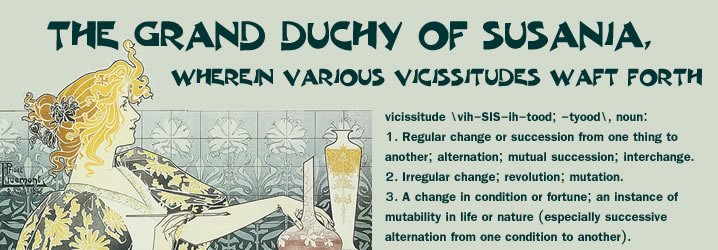So, here is my insight, which has been refined over time though trial and error and much consultation. I am actually 7 years younger that everyone thinks I am.
Now, I am not one of those people who is obsessed about appearing
younger than my age, nor do I see any reason to lie about my age, or
refuse to tell people what it is. I really could care less, and frankly,
I'm delighted in the interest. I think it's pretty well established
that my goal in life is being paid attention to. And to that end, I was
born on December 3rd, 1968. You can find my birthday wishlist at amazon.com.
So, when I say I am 28, it isn't vanity. It's REAL years. I noticed
several years ago that although I was the same age as several of my
co-workers, I felt much younger and more inexperienced. Why? Well, for
one, they had more real life experience of the most obvious kind: they
were married with children. Now, I've observed enough, read enough, been
told enough, that being married is difficult - requires sacrifice,
compromise, etc. Then, having kids requires more of the same, in
addition to loss of sleep. So after a while I realized that my peers
really were much older than I was, in a very practical sense.
But how much older? I was fortunate enough to pick some numbers which
have been confirmed by the approbation of several of these "married with
children" individuals, so I see no reason to question the validity of
my random choice:
Married: add 3 years
Children: add 4 years
Children: add 4 years
So, I told married friends to tack on 3 years to their age. That's your
actual maturity. If there were children, I told them to tack on 7. Now,
this was not popular with many of them, since their vanity did not
enjoy this additional imposed aging. But I remained firm, and despite
the blow to their vanity, none truly contested my theory.
Time passed, and I reached my thirtieth birthday, and promptly sank
into deep depression. It wasn't that I was getting older; it was that I
was at a major threshold, and anything that points out to me that I am
actually living in a real world and not an imaginary fairyland where my
car never breaks down and Mr. Right is scheduled to appear at the
precise moment I am my most charming, lovely, and unselfconscious so
that he might fall madly in love with me, tends to frighten me rather
badly. I had much the same reaction at ages 10 and 20.
This deep depression prompted much self-analysis, and I realized a
significant flaw in my REAL years calculations: That at thirty, I was
supposed to be married with children, but I wasn't. By thirty, the
wedding is supposed to be long past, and at least one child produced.
Yet I had done none of this, while the MAJORITY of my friends had. So,
instead of the Smug Marrieds being 7 years older than I, in reality, I
was 7 years younger than them! They were right on schedule - I was not.
Upon explaining this difference to several of my test subjects, I was
much cheered by their unanimous agreement with my New and Improved
Theory.
So, as a 28 year old, going on my 29th birthday, what does this say?
Not a great deal. It's just a clever way of processing a major
difference between Singletons and Smug Marrieds, it is a fail-proof
conversation starter, and it makes me seem smart and funny which to a
single woman is almost as good as looking thin and beautiful. Years from
now, as my married sisters enter their 13th and their 17th year of
getting up before 9am on a Saturday to feed their families breakfast,
while I sleep in past 10 with the help of a couple of Benadryl after a
night out with my friends, it will surely be a comfort to them (as they
wearily wonder if they will ever get to sleep more than 7 hours ever
again on this earth,) that I am an immature baby in comparison to their
rich and full lives.
I live to validate other people. It's just one of the ways I serve.
[Are you happy now, Mike in MI?]




